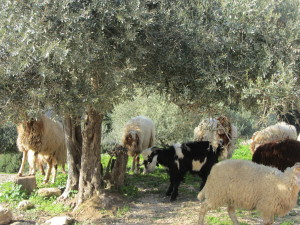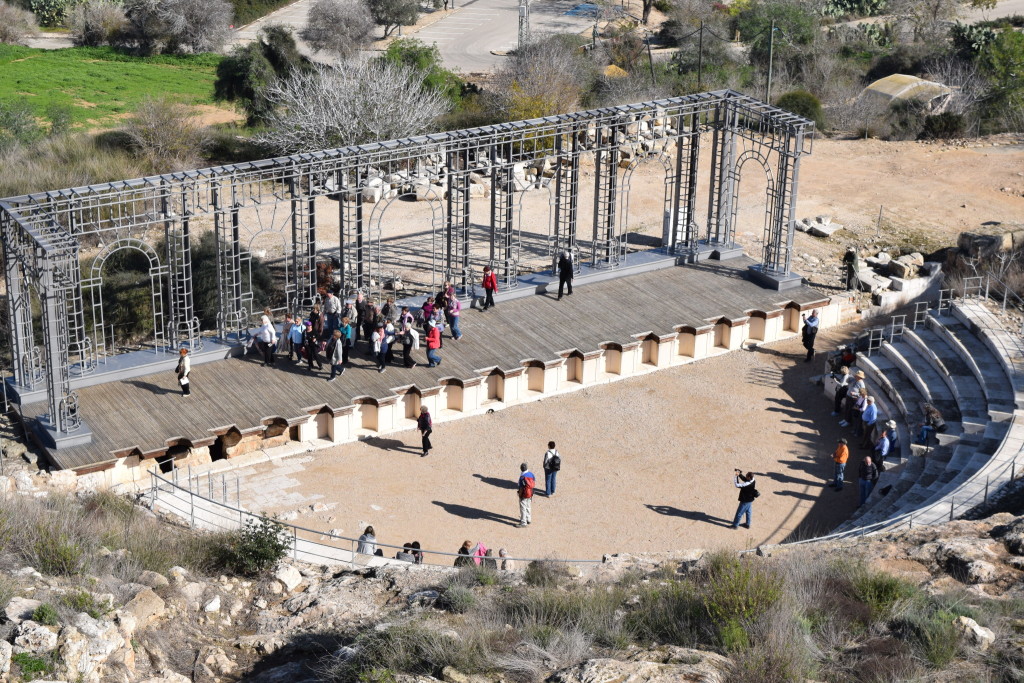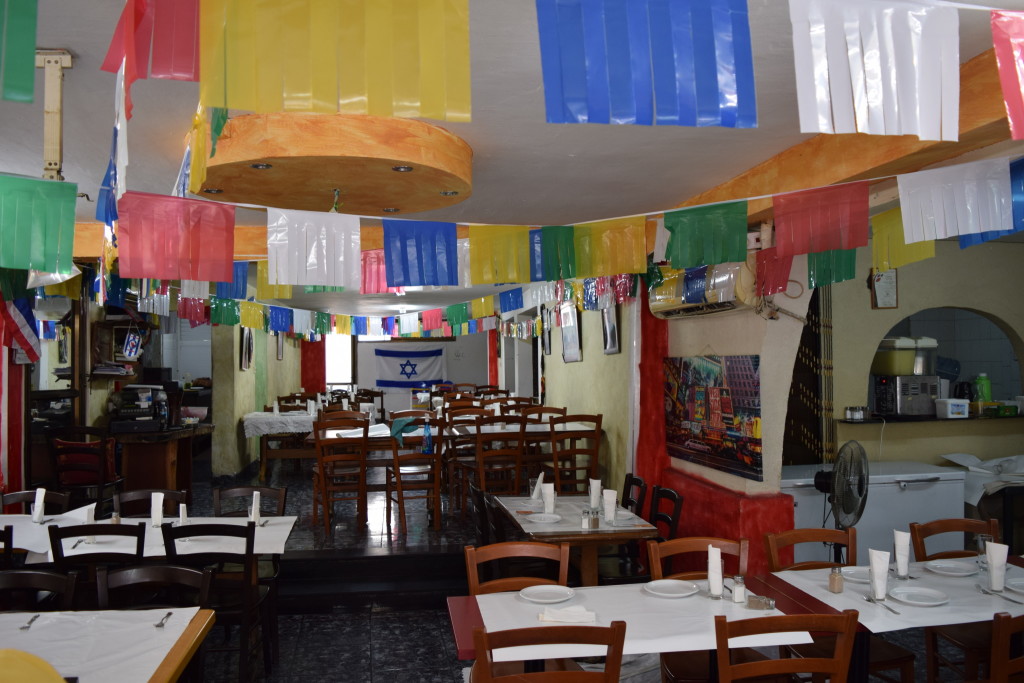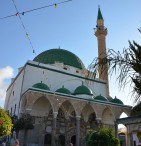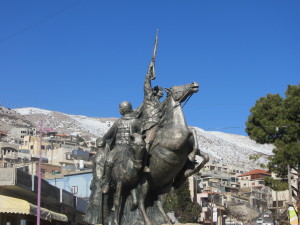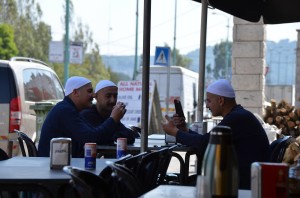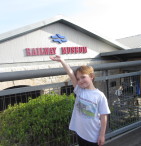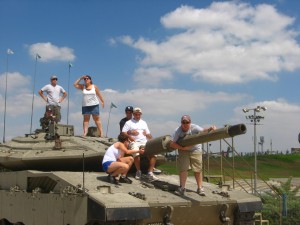Coastal Plain and Lowlands
Haifa Educational Zoo
http://www.visit-haifa.org/eng/Haifa_Educational_Zoo
Haifa, Megiddo, and Lower Galilee (Tzippori, Nazareth and Cana), Druze Carmel.
Tour Duration: 8-10 hours
Using Haifa hotels or the port as our departure point and driving a total of only two hours over the course of the day we have the opportunity to see picturesque Galilean sites important to our understanding of both Old and New Testament history, as well as an appreciation of modern day Israel’s religious minority’s (Moslems, Christians, Druze and Bahai).
Itinerary
Haifa
Megiddo
Tzippori
Nazareth
Cana
Druze Carmel
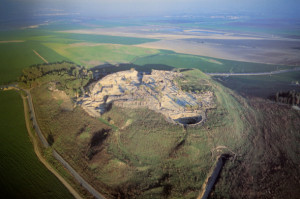
Although it was last inhabited in the time of Alexander the Great in the 4th century BC, Megiddo still held a powerful grip on the imaginations of people several hundred years later to whom the book of Revelations assertions about a final battle at Armageddon rang true.

Initially opposed, Jesus acquiesces to his mother’s requests to save the wedding hosts in Cana from embarrassment when they run out of wine. Thus Jesus’ reputation as a miracle worker begins to spread across the Galilee.

A mid-19th century view of Nazareth reveals a tiny village surrounding the Church of the Ascension, not much larger than what existed 2,000 years ago in the time of Christ. Today’s Nazareth contains the largest concentration of Christians in the Holy Land.
Druze Carmel
Rosh HaNikrah: Grotto’s at the End of the Line.
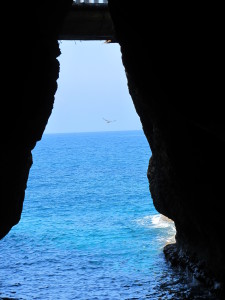
Over millions of years, wave-battered rock has yielded to create grotto’s on Israel’s northern-most coast.
Rosh HaNikra is, in a sense, typical of many Israeli tourist destinations: a combination of ancient and modern history set in a placid setting with a hint of menace. In biblical times it was known as over land entry way to the Land of Israel and was known as the Ladder of Tyre, so named for the first large town just across the border in Lebanon. In modern times the British build a series of tunnels for a railroad that passed by here in order to move supplies and men between the Middle East and Europe. But beyond history, Rosh Hanikrah draws visitors for its sheer beauty. The Sea, with its present wildlife, including Sea Turtles which can be seen by the discerning eye from above, is always a present force. The caves, or grottos, the product of erosion over millions of years add an air of mystery to the site. We ride the steep cable car down from the road to the grotto’s entrance and enters the railroad tunnel where one walks upon the old rail road tracks. After an introductory film about the origins of the caves and the history of the place, we enter the grottos and eventually find ourselves on the massive white chalk rocks that can be seen from as far away as Haifa on a clear day. After we return to the road we take a left turn, walk a few meters and find ourselves at the border fence between Israel and Lebanon. As the sign says, we are closer to Beirut than to Jerusalem. Rosh Hanikrah represents the Israeli spirit, an insistence on celebrating beauty and nature, even amidst the environment of a hostile border.
Haifa, Gateway to Israel’s North
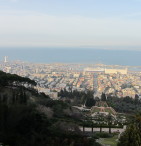
Haifa, Israel’s third largest city combines industrial grit, great beauty and vistas to Israel’s northern coast, the hills of the Galilee and beyond.
Acre, Rosh HaNikra, the Druze Carmel and Megiddo.
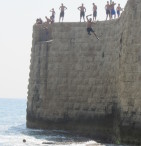
If you want to get a feel for Israel’s northern coast and you’re based in or near Haifa, we have the trip for you.
We’ll begin with a quick trip up to the Bahai Gardens overlook in one of Haifa’s Carmel neighborhoods. From here the view never gets old.Looking out to sea, filled with container vessels you quickly realize the importance of this northern port, second largest in Israel. In the distance on a clear day you can see all the way up to Rosh HaNikraha and the Lebanese border. Just across the bay a shimmering port city appears, Acre. In the winter marvel at the towering Mt. Hermon, covered in snow over 100 kilometers distant. Directly below us the perfectly manicured Bahai Gardens, centerpiece of Haifa and object of pilgrimage for the Bahai faithful. It’s focal point is the Golden-domed mausoleum, the Shrine of the Bab, founder of the Bahai faith and forerunner of the Baha’u’llah.
Lachish
“And inasmuch as my lord sent to me concerning the matter of Bet Harapid, there is no one there. And as for Semakyahu, Semayahu took him and brought him up to the city. And your servant is not sending him there any[more -], but when morning comes round [-]. And may (my lord) be apprised that we are watching for the fire signals of Lachish according to all the signs which my lord has given, because we cannot see Azeqah.
Lachish Letter #4 found at Lachish describing the fall of Azeqah which was, apart from Lachish itself, the last fortress protecting Jerusalem from the Assyrian onslaught
Kibbutz Yad Mordechai
Yad Mordechai takes its name from Mordechai Anielewicz, the hero of the Jewish Warsaw Ghetto uprising against the Nazis during the second world war. The kibbutz founders, like Anielewicz, originally hailed from Poland. During the Israeli War of Independence this kibbutz was located along the road of the Egyptian army’s main advance. For several days the badly outnumbered defenders of the Kibbutz, which consisted of Kibbutz men and haganah soldiers, managed to hold off the enemy’s onslaught. Finally after five days the defenders had no choice but to vacate the community. But their resistance had won for the Israeli forces valuable time to prepare and as the Egyptians continued their drive north towards Tel Aviv they were stopped at Ad Halom a few days later. The Egyptians were finally pushed back to what came to be known as the Gaza Strip which they occupied until the Six Day War.
Ayalon Institute (bullet factory)
Tel Aviv
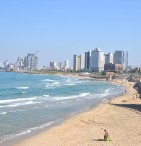
There’s a joke we like to tell. If you have just two days to spend in Israel, spend one in the holy city of Jerusalem and one taking in the unencumbered vistas of the Galilee, its lake and the Golan. But if you have three days here, forget all of that, and spend all of your time in Tel Aviv.
Tel Aviv, founded on sand dunes by 66 pioneering Jewish families in 1909 is Israels commercial and artistic capital, a place where every young Israeli yearns to live. A liberal city with miles of white sandy beaches and culture to match, this is the place for a Mediterranean vacation!
How to put together your Water and Wine tour of Israel
On our Water and Wine Tours website you will not find standard tours.
Don’t worry. We’ll make sure that you experience the must-see sites in the country. But we’ve also included a comprehensive list of sites, by region for people with many different interests, with enough description for you to ascertain whether it’s the sort of place you want to spend your time.
You know your budget and how much time you have to spend here.
So here are our recommendations, based on years of leading all sorts of tours throughout the country.
- Ask yourself if this trip is a vacation. Do you want to see sites but also feel really relaxed at the end of each day? So that you don’t need a few days of sleep upon your return home? If this is the case then try to restrict yourself to three major sites per day. Between the sites, travel and lunch 8-10 hours will pass quickly.
- If you’re more inclined to describe yourself as a pilgrim or someone who wants a survey of sites, then expect to visit up to five sites per day. You’ll be spiritually satisfied but you’ll also need to get a good night’s sleep every night.
“A life changing event”
"Our guide, Zach Levin, made the trip a life changing event for both Linda and me. He was very sensitive to our needs and went out of his way to make sure we got the full Israeli experience. Zach is very knowledgeable and his passion and enthusiasm contributed to our getting the full flavor of the country."
Harvey and Linda W
Your Tour Guide
Water & Wine Tours specializes in individually tailored tours catering to the interests of its clients. Our founder, Zach Levin, is an experienced, licensed tour guide who majored in Middle Eastern Languages and Cultures at Columbia University in the City of New York.
Our tour guides make the history and culture of Israel come alive. They understand that the customer is always right and want you to experience an unforgettable Israel. We’ll take you to places which you’ll love and never forget. When you need to be left alone we’ll sense it. When you need an extra hand we’re there for you.

